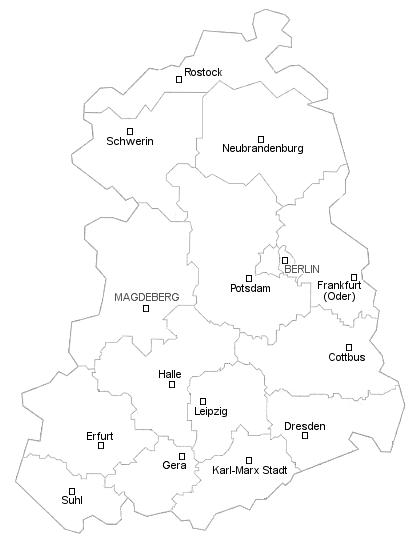Stasi East German Ministry of State Security
The infamous Ministerium für Staatssicherheit (Ministry for State Security), usually known as the Stasi, was established in April 1950. Similar in structure to the then-operating Russian NKVD (predecessor to the KGB), the Stasi was the secret police force for the communist-controlled German Democratic Republic (GDR).
The Stasi used a huge network of informants to repress the citizens of East Germany. It was not uncommon for members of families to spy on each other for fear of blackmail, as a result of physical threats and even because of monetary rewards from the secret police force.
In the late ’80s, the Stasi had nearly 175,000 official informants on their books, roughly one informant for every 100 people. (Some estimate the size of the “unofficial” Stasi informant force as nearly 10 times this level.) The Stasi maintained a force of over 90,000 uniformed and plain-clothes agents and kept files on up to 6 million East German citizens; one-third of the entire population. All phone calls from the West were monitored, as was all mail. Similar surveillance was routine domestically. Every factory, social club and youth association was infiltrated.
Stasi agents collected scent samples from people by wiping bits of cloth on objects they had touched. These samples were stored in airtight glass containers and special dogs were trained to track down the person’s scent. The agency was authorized to conduct secret smear campaigns against anyone it judged to be a threat; this might include sending anonymous letters and making anonymous phone calls to blackmail the targeted person. Torture was an accepted method of getting information.
Aside from their internal operations, the Stasi, in coordination with the KGB, collected external intelligence. The key targets of the Stasi’s external efforts were the U.S. occupational forces in Berlin, U.S. and NATO forces in West Germany, the West German government and military and political bodies of other Western European countries.
The operations of the Stasi, the uniforms they wore and the geographical situation of East and West Berlin made them the perfect ever-present ‘bad guys’ of many Cold War spy novels. However, their portrayal in print was only a shadow of their true and far-reaching influence. Stasi abuses led to protests in Leipzig that helped pave the way for the fall of the Berlin Wall.
In 1990, when West and East Germany were reunited, the Stasi was dissolved. Many sought retribution for the pain, suffering and even loss of life caused by the East German secret police through the court system.
However, a final decision by the unified German court in 1995 stated that former Stasi officials could not be prosecuted for taking part in or conducting Cold War espionage against the West.

For administration purposes, East Germany was divided into 15 Districts, each District having a District Administrative Office. Each district was then sub-divided into areas with, in 1989, a total of 209 Area Offices; there were also 9 specific site offices.
As well as the 15 District administrative headquarters, each District also had a protected bunker to where the District Administrator and his staff could retreat to in times of tension or war. These bunkers also acted as communications intercept centres.
They were all identical and were located on country estates with a ‘cover story’ that allowed people to come and go without arousing local interest or suspicion.
The bunkers were totally self sufficient with there own generators, ventilation and filtration plant, water purification plant, dormitories, kitchen and a medical bay. They employed a complex system or air locks that were designed to allow survival for up to 40 personnel for 7 - 14 days following a nuclear or chemical attack.

Plan of a typical Stasi bunker. Drawn by Nick Catford
